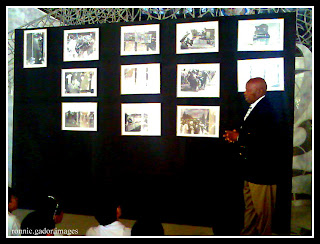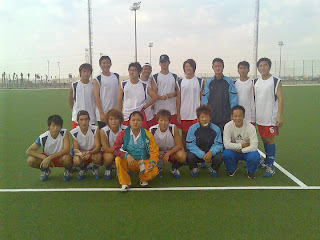



 (This article was previously published by the author with PARADIMO, the College of Arts and Sciences Faculty Journal of De La Salle University-Dasmarinas, 1998)
(This article was previously published by the author with PARADIMO, the College of Arts and Sciences Faculty Journal of De La Salle University-Dasmarinas, 1998)
Only few actors can be called debonair as when he was known as the King of Philippine Movies.
Leopoldo Salcedo, who has been in the movie for quite a time has done 500 pictures he starred in. A newspaper article about him revealed that he has made love with 18,000 women, no doubt he was once called also a "Great Lover" (Evening Star, 1988).
From unknown teen-ager to King of Movies, such is the true life story of "Pol" as he is fondly called by his colleagues. How he accomplished these things in a short span of time can not be narrated in a page of comment. He is not only an artist, but also a shrewd businessman.
In Gene Camposano's book, The Brown Idol: The Leopoldo Salcedo Story, an intimate and revealing portrait of the original "King" of Philippine Movies was painted. In the book are revealing facts about Salcedo's checkered career, hitherto unpublished: he was the only man who spurned Hollywood sex-goddess Ursula Andres; he built the famous celebrity home ever erected, La Roca Trinidad, as a "gift of love"; he is the great-great-grandson of the dashing conquistador, Captain Juan de Salcedo who, with Martin de Goiti in 1570 , overran Rajah Sulayman's domain and conquered Manila, chased the Chinese adventurer Limahong to the north and swept the Bicol Peninsula. Leopoldo Salcedo himself is the grandson of the Adelantado and General Miguel who proclaimed the conquest of the Philippines for the Spanish crown and declared Manila as its capital.
Pol has always been Filipino, even has he walked with the inner circle of the greats and the near-greats; raised champagne glasses in toast of excellence with the elite; shared with limelight with the equally famous, and tasted the sweet brew of success. In any event, Pol's name is alreadyenshrined in the Cavite Hall of Fame, born in San Roque, Cavite on March 13, 1912 and stands at 5'11.
In his "I am the Philippine Movies" attitude, that rendered him indestructible, has remained true to his Piscean mold, attained by his own merit, a position of considerable celebrity and honor.
The "Rudolph Valentino" of the Philippines was given a break by Jose Nepomuceno's Santong Diablo, having Purita Santamaria as his first leading lady in 1936.
He had his stint as a producer also, with his own outfit which produced Dalawang Bandila, Bisig ng Manggagawa, La Roca Trinidad, Neneng Ko, etc.
The "king" in the Moises Padilla Story, won the FAMAS Best Actor award in 1961, and is also a Lifetime Achievement Awardee.
When both local and foreign movies were banned by the Japanese during the occupation, he shifted to the stage where also became a favorite.
In my oral history conducted with Pol, he gave us insights on the plight of the movie industry, the abuse of movie reporters, his treatment to the intrigues he had encountered, the censorship in Pre-Martial law era, and the so-called bomba or sex films.
This is a tribute to a great artist of Philippine cinema and a highly regarded Filipino historian who has helped the author draft the questionnaire for this oral history project conducted in 1988, the late Dr. Marcelino A. Foronda, Jr.
The following are interesting questions and answers that will enlighten readers on Philippine Cinema selected to shorten this blog.
Gador: What would you consider as the highlights of your early movie career?
Salcedo: Highlights? There are no highlights. I'm glad because I was able to express my feelings and I have entertained the people, my kababayans, and I am happy about it. I also like learning different languages and dialects like Bicol. As I told you, education is a continuous learning process, that's what Dr. Laurel said.
Gador: Who were your contemporaries during your heydays? Are they still active at present and how are you going to rate them?
Salcedo: A lot of them died already, like Rogelio de la Rosa, who was one of the prominent actors then, Carlos Padilla, Jose Padilla, Efren Reyes Sr. who came later, of course, was also good, but they died already. I think dying depends upon what you are doing.
Gador: Could you please share with us your experiences as the King of Philippine Movies?
Salcedo: Well, I'll tell you what. There was a nationwide contest through coupons, there was a prestigious movie magazine then about literary film movies and I won for three consecutive years. My points are millions and very distant from my opponents. So after three years I asked them to stop already the contest, they said "Why?" I said. "You are not winning, puro ako na lang nang ako, kayo na lang ang mag-contest at ako na lang ang adviser."On which my opponents did not agree. My opponents then were Rogelio de la Rosa, Efren Reyes Sr. , Ernesto La Guardia, Jose Padilla, all these prominent actors. But if I'm not included, they don't run as candidates, because they thought that the level of the contest will be very low. But nothing was changed, I was the one who always win and so my decision was to stop it and my reason was, I don't like it anymore.
Gador: Please give us insights into the early Philippine movies as you perceive them. What kind of storyline, the acting, the directors and the amount actors and actresses were paid?
Salcedo: My conception and belief about the motion picture is not only to invest and make money which is so called business. What I want is a story that can educate our people to have in their minds ahigher sense of values, so that we will have our own identity as Filipinos, so that we will not forget where we came from , our heritage, our background, our history, because our race is a beautiful race. I don't want the Filipinos to forget where we came from, because there is a golden rule... If you forget from where you came from, you can never reach your destination. So I want the motion picture to inculcate in the minds of the audience what are the virtues or the moral values and not business. That's what I want and it's not the matter of making money. But take a look of what is happening now. Before you are proud to be an actor, but now it seems that you are not proud to be an actor anymore. In any profession, the dignity of a person is the most important. Even though you're only a driver nor a barber, but the dignity of a person must be there. Now, if you come out from a less quality film or a bold film, I don't thinkyou can be proud of that, because you are ashamed. That's why I don't want to appear in so many movies now.
to be continued...












































